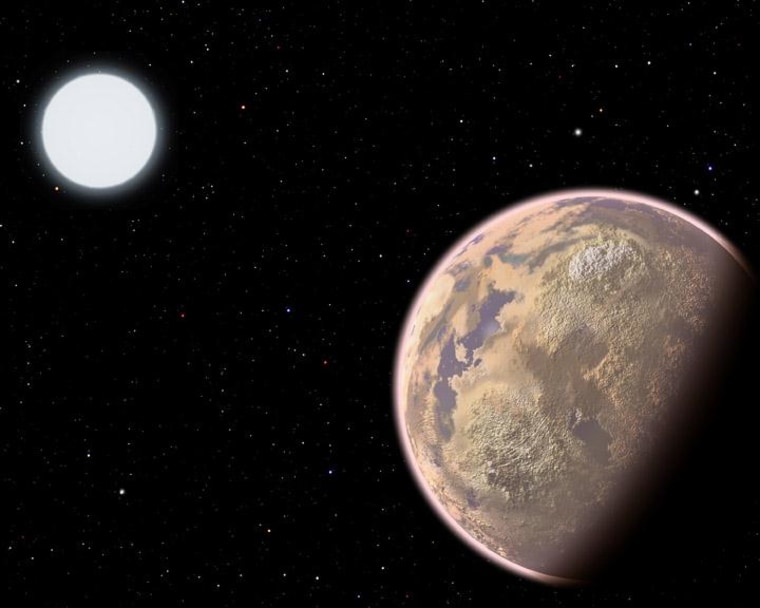E.T., phone home — and tell your pals to pollute the air. That's one way we might be able to detect alien civilizations on faraway planets, researchers report in a study to be published in The Astrophysical Journal. They say that under ideal conditions, NASA's yet-to-be-launched James Webb Space Telescope could detect the chemical fingerprints of industrial pollutants such as ozone-destroying chlorofluorocarbons in the atmosphere of an Earthlike planet circling a white dwarf.
"People often refer to E.T.s as 'little green men,' but the E.T.s detectable by this method should not be labeled 'green' since they are environmentally unfriendly," Harvard astrophysicist Avi Loeb said in a news release describing one of the dirtiest tricks in the search for extraterrestrial intelligence, or SETI. The presence of chemicals such as methane or oxygen in alien atmospheres could serve as potential evidence of life, but Loeb and his colleagues say it'd take industrial chemicals like CFCs to show that the life forms were more intelligent than microbes or mice (though not smart enough to avoid fouling their air).
Sign up for Science news delivered to your inbox
IN-DEPTH
- City Lights Could Point to E.T.
- James Webb Telescope Might 'See' Alien Life
- Drake Equation Calculator Figures the Odds for E.T.
SOCIAL
— Alan Boyle, NBC News
